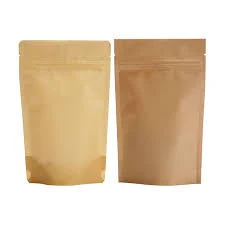- Afrikaans
- Albanian
- Amharic
- Arabic
- Armenian
- Azerbaijani
- Basque
- Belarusian
- Bengali
- Bosnian
- Bulgarian
- Catalan
- Cebuano
- chinese_simplified
- chinese_traditional
- Corsican
- Croatian
- Czech
- Danish
- Dutch
- English
- Esperanto
- Estonian
- Finnish
- French
- Frisian
- Galician
- Georgian
- German
- Greek
- Gujarati
- haitian_creole
- hausa
- hawaiian
- Hebrew
- Hindi
- Miao
- Hungarian
- Icelandic
- igbo
- Indonesian
- irish
- Italian
- Japanese
- Javanese
- Kannada
- kazakh
- Khmer
- Rwandese
- Korean
- Kurdish
- Kyrgyz
- Lao
- Latin
- Latvian
- Lithuanian
- Luxembourgish
- Macedonian
- Malgashi
- Malay
- Malayalam
- Maltese
- Maori
- Marathi
- Mongolian
- Myanmar
- Nepali
- Norwegian
- Norwegian
- Occitan
- Pashto
- Persian
- Polish
- Portuguese
- Punjabi
- Romanian
- Russian
- Samoan
- scottish-gaelic
- Serbian
- Sesotho
- Shona
- Sindhi
- Sinhala
- Slovak
- Slovenian
- Somali
- Spanish
- Sundanese
- Swahili
- Swedish
- Tagalog
- Tajik
- Tamil
- Tatar
- Telugu
- Thai
- Turkish
- Turkmen
- Ukrainian
- Urdu
- Uighur
- Uzbek
- Vietnamese
- Welsh
- Bantu
- Yiddish
- Yoruba
- Zulu
Exploring the Versatility and Applications of Polyvinyl Chloride Plastics in Modern Industries
Understanding Polyvinyl Chloride (PVC) Plastics
Polyvinyl chloride, commonly known as PVC, is one of the most widely used synthetic plastics in the world. It is a versatile material found in countless applications, ranging from construction to healthcare, and even consumer goods. Understanding PVC's properties, uses, manufacturing processes, and environmental implications is crucial for appreciating its role in modern society.
Composition and Properties
PVC is produced from the polymerization of vinyl chloride monomer (VCM). Its chemical structure comprises repeating units of -CH2-CHCl-, which gives PVC its characteristic properties. This polymer can be formulated in two primary forms rigid and flexible. Rigid PVC, often referred to as uPVC (unplasticized polyvinyl chloride), is commonly used in building materials, such as window frames and piping. Flexible PVC, on the other hand, contains added plasticizers, making it suitable for applications like flooring, inflatable products, and hoses.
One of the most significant properties of PVC is its durability. It is resistant to weathering, chemical corrosion, and fire, which makes it ideal for outdoor applications and harsh environments. Additionally, PVC is lightweight, inexpensive, and possesses good insulation properties. These features contribute to its popularity across various industries.
Applications of PVC
PVC's applications are vast and diverse. In the construction sector, it is widely used for pipes, siding, and window profiles, providing both structural integrity and aesthetic appeal. Its resistance to moisture makes it an ideal choice for plumbing and drainage systems. In the healthcare field, PVC is utilized for making medical devices, such as IV bags and tubing, due to its flexibility and sterilization capabilities.
Moreover, the consumer goods market has embraced PVC in the production of products like credit cards, toys, and faux leather goods. Its ability to be manufactured in different colors and finishes allows for creative designs and customizations, appealing to various consumer preferences.
polyvinyl chloride plastics

Manufacturing Process
The production of PVC involves several steps. It begins with the extraction of ethylene from crude oil and chlorine from salt, which are then used to synthesize vinyl chloride. The polymerization process can be carried out through different methods, including suspension, emulsion, and bulk polymerization. Once the PVC resin is created, it can be compounded with various additives to enhance properties such as flexibility, UV resistance, and impact strength. These compounded materials can then be molded or extruded into the desired shapes and forms.
Environmental Considerations
Despite its many advantages, the environmental impact of PVC cannot be overlooked. The production of PVC involves the use of chlorine, which raises concerns about the release of harmful dioxins into the environment. Additionally, the disposal of PVC waste poses challenges, as it is not biodegradable. Efforts are being made to enhance recycling processes for PVC, with some initiatives focused on reclaiming post-consumer PVC products.
Nevertheless, advancements in technology and a growing emphasis on sustainability are paving the way for more eco-friendly practices in PVC manufacturing and recycling. The introduction of PVC alternatives, such as bioplastics, is also gaining traction as consumers demand more sustainable options.
Conclusion
In summary, polyvinyl chloride plastics play a vital role in numerous industries due to their favorable properties, diverse applications, and cost-effectiveness. Although concerns surrounding their environmental impact exist, ongoing research and innovations aim to mitigate these issues, ensuring that PVC continues to serve society sustainably. Its significance in construction, healthcare, and consumer goods underlines the importance of understanding this ubiquitous material in our daily lives. As we move forward, balancing the benefits of PVC with environmental responsibility will be crucial for its future use.













